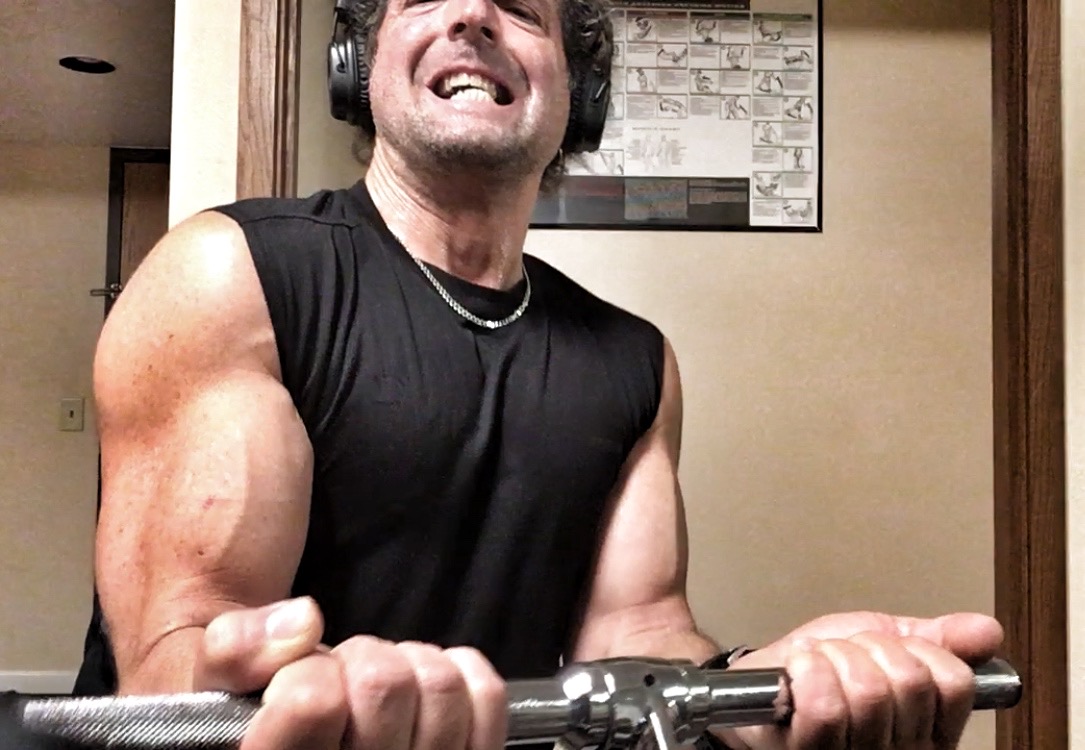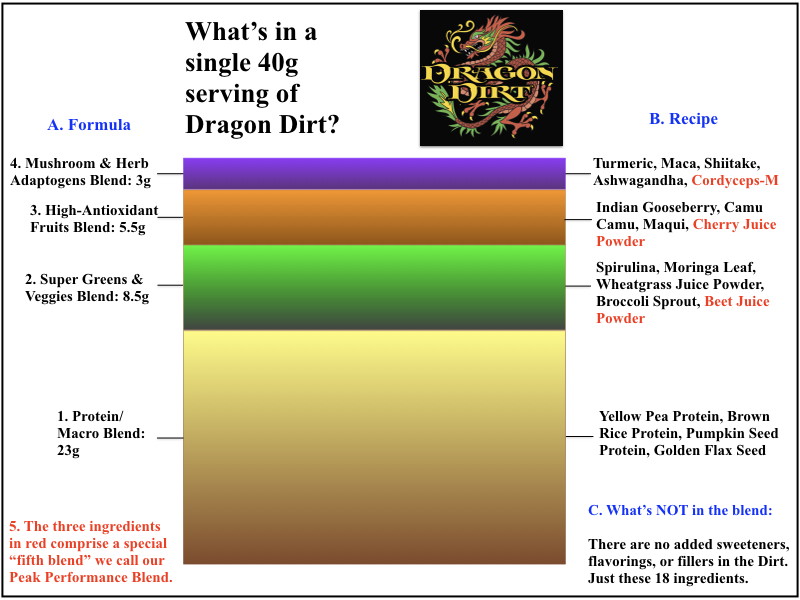The Bobby Rock Newsletter #4 (2-24-2021) - Rock-Solid Routines
The Bobby Rock Newsletter #4 (2-24-2021) - Rock-Solid Routines
 |
|
Hey Gang -
Once again, thank you all for taking this journey with me, and for all the great feedback so far. Let's get right into it. In This Issue:
_______________
Four Factors in Creating YOUR Rock-Solid Workout Routine
Your ideal training routine is one that not only gets you consistently great results, but that you actually look forward to powering through week after week. Check out the following four factors to either create your ideal routine from scratch or whip your current one into better shape: 1. The Diversity Factor: Your ideal routine resides at the intersection of three different training modalities: Resistance training, preferably in some form of weight-lifting; Cardio training, which involves an activity that sustains an elevated heart rate for at least 25 minutes; and flexibility training, which would include a variety of both upper and lower body stretches. All three of these modalities play a critical role in helping you achieve optimal fitness. (If you're just starting out—or trying to get back into a steady regimen—it's okay to focus on only one activity if this approach feels a bit overwhelming. You can gradually expand on your routine as you go.) 2. The Priority Factor: As a matter of structuring your routine and prioritizing what all you will do on a week-to-week basis, I recommend that you favor one particular modality, then integrate the other two in more of a supportive role. Here are a few examples: If weight training (resistance) is your priority, you might try to get in a half-hour of cardio three times a week, followed by a quick ten-minute stretching routine. If running or cycling (cardio) is your priority, you might lift weights two or three times a week and be sure and stretch after every cardio session. If yoga or martial arts (flexibility) is your main thing, you might squeeze in a few additional workouts each week that include cardio and/or weight training. 3. The Location and Logistics Factor: Once you decide what you will be doing for your three modalities, it’s time to give some serious thought to where and how you would prefer to do each one. To discover the optimal combination or “ recipe” of training options, consider the following: Do you like to train alone, with an instructor or training partner, or in a class setting? Do you prefer to train indoors or outdoors?
Do you like to listen to music (or audiobooks or podcasts) while you train, or do you prefer silence?
Do you like to train at home, or do you prefer to go to a facility (health club, dojo, yoga studio, etc)?
Now, consider this line of questioning for each individual modality. As an example, I prefer to lift weights alone in a traditional gym setting, do most of my cardio work in the form of running outdoors, and practice martial arts both with a private instructor and in my own home dojo. For the weights and running, I like to listen to music (or something informative), but for my martial arts training, I usually prefer the meditative silence. Conversely, you might prefer to lift weights at home in your garage or basement with a training buddy and tunes blaring, do cardio on a stationary bike while watching TV in your living room, and attend class at a yoga studio. Everyone’s different, and once you understand your preferences, your routine will be much easier to sustain over the long term.  Typical shot from a hotel gym on tour... 4. The Duration vs Frequency Factor: The final factor in cementing your routine is to ask yourself the following; Do you prefer to work out for longer durations of time, but less often—like, for example, three times a week at 80 minutes per session? Or do you prefer to do shorter workouts, more frequently—like six times a week at 40 minutes per session? Either one is fine, but your preference will determine how you will specifically structure your routine. Let’s say your priority activity is weight training: If you prefer longer sessions less often, then you’ll want to get it all done in an 80-minute slot on Monday, Wednesday and Friday by hitting the weights for 40 minutes, doing 30 minutes of cardio, then finishing up with 10 minutes of stretching. Or if you prefer shorter sessions more often, then, for example, you would hit the weights for 40 minutes on Monday, Wednesday and Friday, then do 30 mins of cardio, followed by 10 mins of stretching, on Tuesday, Thursday, and Saturday. Give this “Four Factor” inventory a shot and get ready to take your routine to the next level! _______________
Into as of Late
I’m asked regularly about book, music, podcast, or film recommendations. But it’s hard to merely recommend things across-the-board without knowing what someone is into. So instead, maybe I’ll just occasionally share two or three recent reads, listens or vids that I’ve been enjoying lately. Maybe something will jump out at you... To Read (or listen): Shoe Dog - Phil Knight This is the memoir of Nike founder Phil Knight, focusing almost exclusively on the early days of the Nike story, on up through 1980. I was interested in scoping the book because I think J. R. Moehringer is such a bad-ass writer/collaborator. I have no allegiance to, or fascination with, Nike. But as suspected, the long-and-winding journey of the man and the brand makes for some compelling storytelling. And the audiobook, combining some brilliant writing with a top-flight narration, makes for one of the more “couldn’t stop listening” Audible experiences I’ve had in a while. Both runners and entrepreneurs will likely find all the backstories engaging, but many of the themes and storylines should have universal appeal. Scope previews first to see if it resonates. PS. I understand why some people were put off that the book focuses almost exclusively on the early story arch of the Nike/Knight saga (with not much on Nike's 80s-and-beyond Michael Jordan hey-day, etc). I get it. However, given the superb pacing and painstaking detail given to this chunk of the story, I think the answer lies, not in editing the shit out of this draft to accommodate the next few decades but, in a part two! This book is impeccable as is.  Music to My Ears: Hiromi - (been juggling Alive and Spark with Spectrum) The pianist continues to astound. Both Alive and Spark feature Hiromi with drummer Simon Philips and bassist Anthony Jackson in an adventurous modern jazz setting. Phenomenal small ensemble performances: three motherfuckers playing live in the studio, just throwing it down. So refreshing to hear these days. And Spectrum is a solo piano record where Hiromi has occasion to push all kinds of envelopes, unencumbered by standard ensemble structures. She is a sensational talent. Lately, I’ve had these three records looping in the background at the desk as I work. It’s an effective, almost meditative way to assimilate all of the rhythmic and harmonic complexity in the music. But these records are not for everyone. Might want to stream first, then buy later if you dig it. _______________ Dragon Dirt Smoothie Science
I recently launched my very own custom-blend superfood powder called Dragon Dirt. In this section, we offer tips and insights for our kick-ass new DD community. I thought I might take you guys behind the curtain today for a glimpse at what my "visual analysis" process looks like in analyzing other products in the market, and also in creating what I believe is the perfect superfood blend. I'm obviously not a graphics guy, but this is the kind of thing my poindexter ass would do in evaluating many of the available all-in-one meal replacement powders. Here is the process as applied to the Dirt.
 To me, the three critical areas of analysis are:
1. Formula: This is the exact series of sub-blends that comprise the whole blend. I believe these four subs give us the most bang for the caloric buck. (Notice the "fifth blend" is created from ingredients that are already in the other four blends.)
2. Ingredients: This is all about the quality and quantity of the ingredients. Note: More ingredients are seldom a better idea, simply because the more you try to cram in there, the less of each ingredient is present in the final mix! 3. What's NOT in it: Here we evaluate how many added sweeteners, fillers, flavorings, emulsifiers, etc., are in the mix, and how much total "scoop real estate" they might take up. Moving forward, I will be sharing more of this kind of analysis—especially as it pertains to other products out there—as a way of detailing my personal journey behind the who/what/why of creating Dragon Dirt. As usual, though, just wanted to share a bit of it with you guys here first. Go HERE to check out the Dirt. _______________
Thanks, everyone! If you haven’t already, be sure and take a moment to sign up in the upper right-hand corner of any page at www.bobbyrock.com. This will give you a much more customized experience, and also grant you access to various members-only areas, events, etc.
And again, let me know how I can make this Newsletter most useful to you. Just hit the reply button on this email (info@bobbyrock.com) and talk to me. I try to respond to all of these that I can. Much appreciated. Until next time, BR
|
